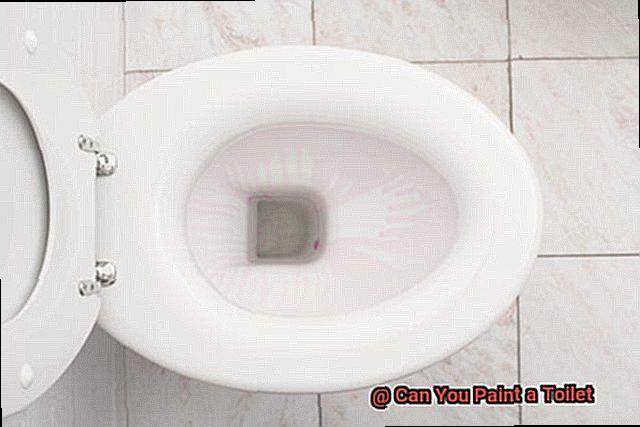Are you tired of your drab and outdated bathroom? Do you want to give it a quick and easy facelift without draining your wallet? If so, painting your toilet might be the answer.
Yes, you read that right – you can paint a toilet. But before you start slapping on any old paint, there are a few things to consider. First off, not all types of paint are suitable for porcelain surfaces like toilets. You’ll need to use a special type of paint that’s designed specifically for this purpose.
Preparation is key when it comes to painting your toilet. Before starting the project, you’ll need to thoroughly clean the surface and sand it down to create a rough texture that will help the paint adhere properly. This step is crucial in ensuring the longevity of your newly painted toilet.
But hold up before rushing off to buy supplies. It’s important to weigh the pros and cons of painting your toilet. While it can be an affordable DIY project, keep in mind that the finished result may not be as durable as a new toilet. Additionally, painting a toilet requires patience and attention to detail with multiple coats needed for optimal coverage.
However, if you’re up for the challenge, painting your toilet can be an exciting and creative way to breathe new life into your bathroom décor without breaking the bank. So why not give it a try?
Contents
Can You Paint a Toilet?
Well, the good news is that you can definitely paint your toilet. However, before grabbing a paintbrush, there are some essential things you need to know.
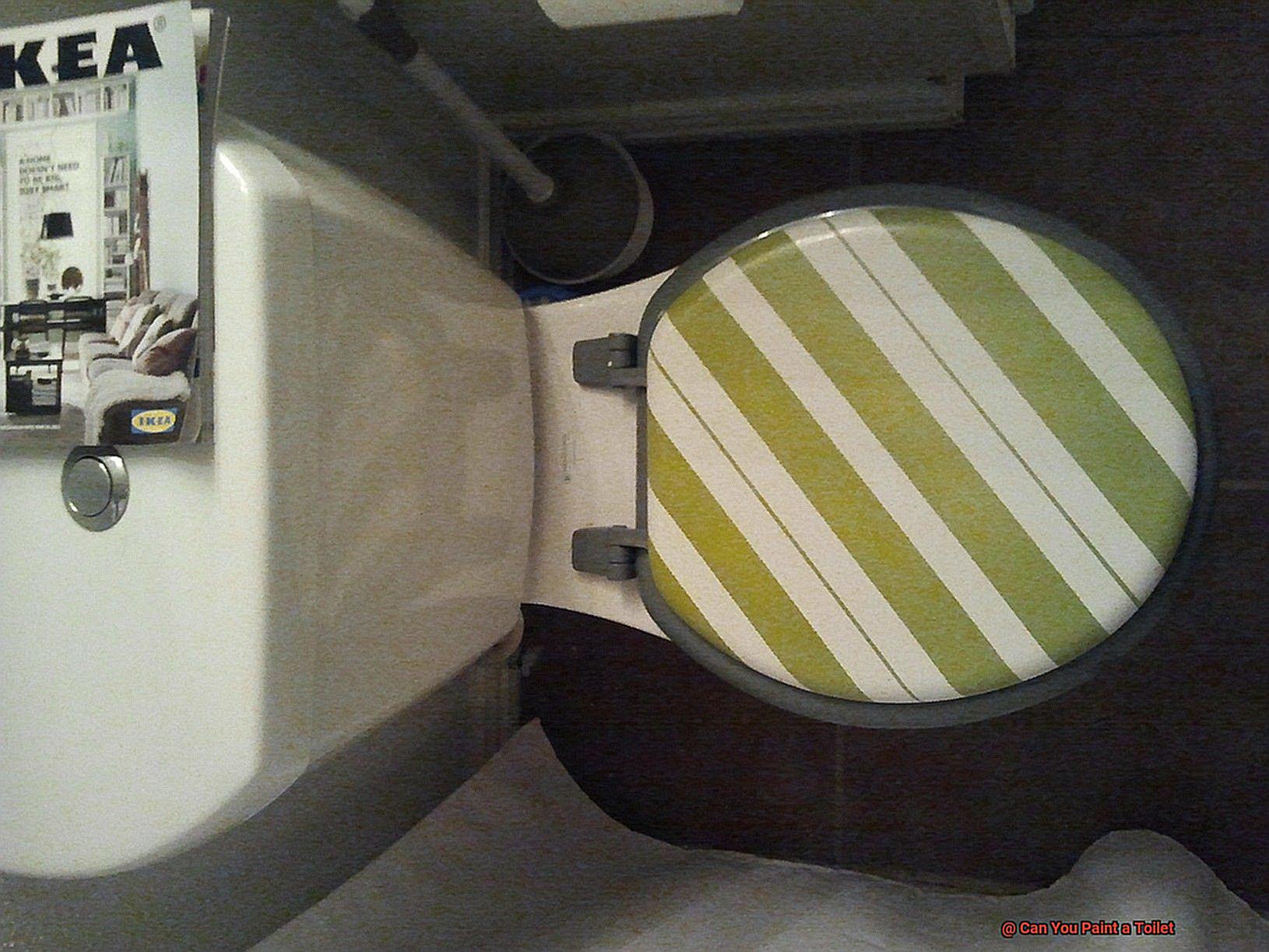
The first thing to keep in mind is that regular paint won’t stick to the porcelain surface of a toilet. You need to use a special epoxy paint that’s specifically designed for porcelain surfaces. This will guarantee better adhesion and durability, ensuring that your painted toilet looks great for years to come.
Before starting the painting process, make sure to properly prep the surface of your toilet. This means removing any existing coatings or residue from the surface, sanding down rough spots or chips, and ensuring that the toilet is completely dry before painting. It’s also recommended to use a primer before applying the paint to ensure better adhesion and long-lasting results.
When it comes to choosing the right color, there are tons of options available at most hardware stores. Consider selecting a shade that complements your bathroom decor and style. From bold and bright colors to classic neutrals, the possibilities are endless.
When applying the paint, it’s best to use several thin coats instead of one thick coat. Allow each coat to dry completely before adding the next one. This will help prevent drips or streaks and ensure an even finish. It’s also important to avoid using harsh chemicals or abrasive cleaners on the painted surface, as this may damage the finish.
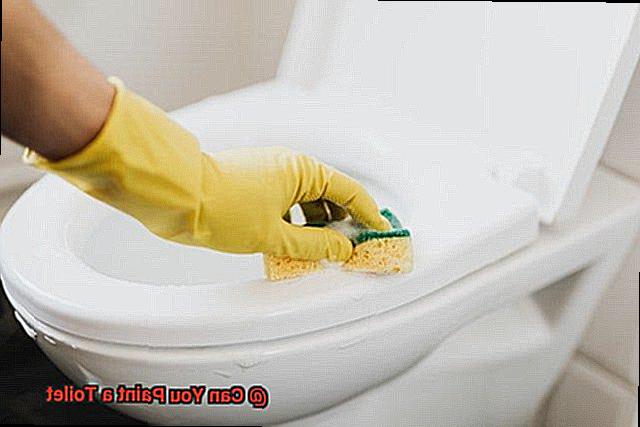
While painting your toilet is an affordable way to update its appearance, keep in mind that it may not be a permanent solution. Over time, the paint may begin to wear or chip away, requiring touch-ups or even a full repaint. But hey, that just means you get another chance to choose a fun new color.
What Type of Paint Should You Use?
Painting your toilet might just be the answer. However, choosing the right type of paint is critical to get a professional finish that will last.
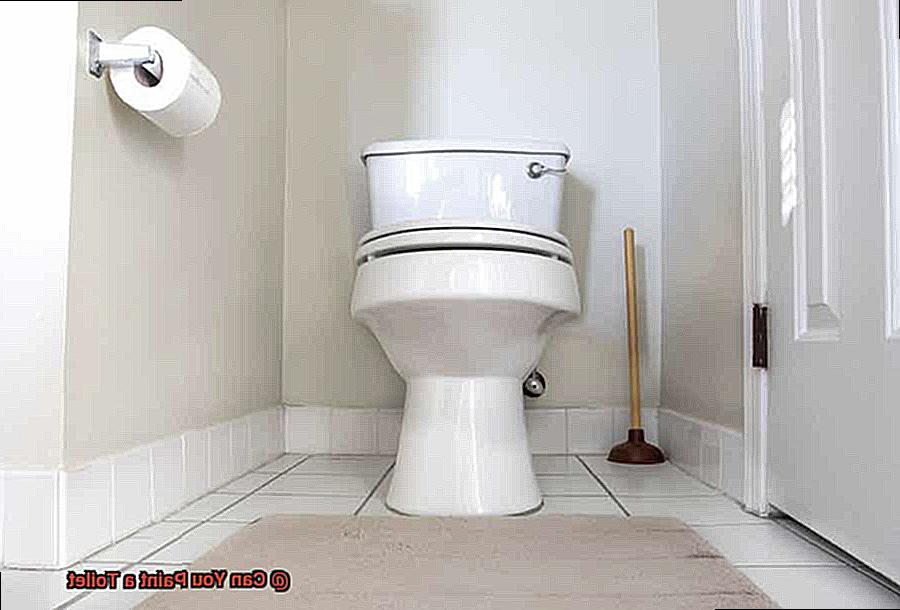
Not all paints are suitable for porcelain surfaces, which is why epoxy paint is the best option for painting toilets. Epoxy paints are highly durable and resistant to chipping, peeling, and fading. They also provide a glossy finish that is easy to clean and maintain.
To make sure you get the perfect results for your toilet, choose an epoxy paint specifically labeled for porcelain surfaces. Using a paint that’s designed for other materials like metal or concrete may not adhere properly to porcelain.
But before you start painting, it’s crucial to prepare the surface properly. A thorough cleaning with a mild detergent and removal of any existing paint or coatings is necessary. Lightly sanding the surface can also improve paint adhesion.
Preparing the Toilet Surface
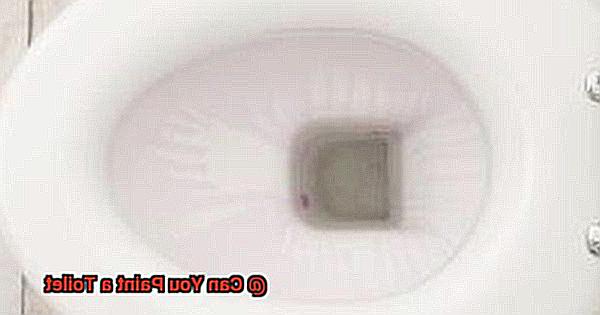
A fresh coat of paint can make a world of difference, but before you start, it’s important to properly prepare the surface. This will ensure that the paint adheres well and lasts longer, giving you a professional-looking finish that will stand the test of time.
The first step in preparing the toilet surface is to make sure it’s clean and dry. Use warm water and detergent to scrub the toilet bowl thoroughly with a brush, then rinse it off with water. After cleaning, leave it to dry completely for at least 24 hours.
If there are any rust spots, chips, or cracks, don’t worry – you can fix them. Use a two-part epoxy putty to fill in the damaged area and smooth it out with a putty knife. Follow the manufacturer’s instructions for drying time.
After the surface is clean and smooth, lightly sand it with fine-grit sandpaper. This will help the paint adhere better to the surface. Be sure to wipe the surface with a damp cloth after sanding to remove any dust or debris.
Now it’s time to prime. Apply a coat of primer designed for use on ceramic surfaces and allow it to dry for at least 24 hours before applying the paint. The primer will ensure that the paint adheres well and lasts longer.
Choosing the Right Color
Choosing the perfect color for painting your toilet can be a fun-filled and rewarding experience that transforms your bathroom into a stunning and stylish space. However, with so many factors to consider, the task can be daunting. But fear not. We have compiled some tips to help you choose the right color for your toilet.
The first thing to consider is the overall color scheme of your bathroom. If your bathroom has a neutral or monochromatic color scheme, you may want to spice things up with a bold or bright toilet color that adds some personality and interest to the space. However, if your bathroom already has a lot of colors or patterns, you may want to opt for a more subtle or muted toilet color that complements the existing decor.
Another crucial factor is the size of your bathroom. If you have a small bathroom, painting the toilet in a lighter color can make the space feel more open and airy. On the flip side, if you have a large bathroom, you could experiment with darker or bolder toilet colors without overwhelming the space.
Choosing the right paint is equally critical when painting your toilet. Experts recommend using an epoxy-based paint specifically designed for porcelain surfaces. This type of paint is durable and resistant to chipping, peeling, and fading.
Painting your toilet is an easy and affordable way to update your bathroom’s look and feel. So don’t be afraid to express yourself by choosing a bold or unique color that reflects your style and personality.
Applying the Paint
Look no further than painting your toilet. However, to achieve a stunning outcome, it’s important to follow the proper steps for applying paint to your toilet. Let’s dive in and explore each step in detail.
Firstly, ensure your toilet is completely dry before starting the painting process. This means leaving it unused for a day or two after cleaning. Once it’s dry, you’re ready to begin.
Next, select a high-quality enamel paint specifically designed for bathroom fixtures. Opt for a paint that’s resistant to water and moisture to prevent peeling and chipping over time. Using a brush or roller, start with a thin coat of paint on the toilet’s surface.
Allow each layer of paint to dry completely before applying the next one. To speed up the drying process, use a fan or open windows for ventilation. Gradually build up layers until you reach the desired thickness of paint.
Once you’ve applied all necessary coats of paint, allow it to dry completely for at least 24 hours before using the toilet again. This step is crucial for ensuring the paint fully cures and hardens, providing a long-lasting and durable finish.
Allowing Adequate Drying Time
If you’re looking to give your toilet a fresh new look with a coat of paint, it’s essential to understand the importance of allowing adequate drying time. Rushing the process will only lead to disappointment with an inferior result.
Once the paint has been applied, it’s crucial to give it enough time to dry and cure before using the toilet again. The drying time can vary from a few hours to several days depending on the type of paint used. Most paints suitable for toilet painting are oil-based or epoxy-based, which typically require at least 24 hours of drying time. However, some newer acrylic-based paints may dry faster, so be sure to read the manufacturer’s instructions carefully and follow their recommendations for drying time.
In addition to allowing sufficient drying time, it’s crucial to avoid touching or using the toilet during the drying process. Any contact with wet paint can cause smudging or smearing, ruining the finish. Therefore, patience is key when it comes to achieving a durable and long-lasting finish for your painted toilet.
By following these simple steps and waiting until the paint has fully cured, you’ll be able to enjoy your newly painted toilet for years to come. Rushing the process could lead to a disappointing result and a waste of your time and money.
kDJogr3FmdQ” >
Conclusion
In conclusion, painting your toilet is a fantastic way to revamp your bathroom without breaking the bank. However, before you grab your paintbrush and go to town, there are a few essential things you need to know.
Firstly, regular paint won’t do the trick. You’ll need a special epoxy paint designed for porcelain surfaces that will stick and stay put. Secondly, preparation is key. Make sure you give your toilet a thorough cleaning and sand it down to create a rough texture that will help the paint adhere correctly.
Next up, choose the perfect color for your throne. Your painted toilet should complement your bathroom decor and style seamlessly. When applying the paint, be sure to use several thin coats instead of one thick coat. This will ensure an even finish and prevent drips from forming.
It’s also important to avoid using harsh chemicals or abrasive cleaners on the painted surface as this may damage the finish. And last but not least – patience is key. Allowing adequate drying time between coats is critical for achieving a durable and long-lasting finish for your painted toilet.
By following these tips carefully, you can achieve a professional-looking finish that will make your bathroom look brand new without breaking the bank.

